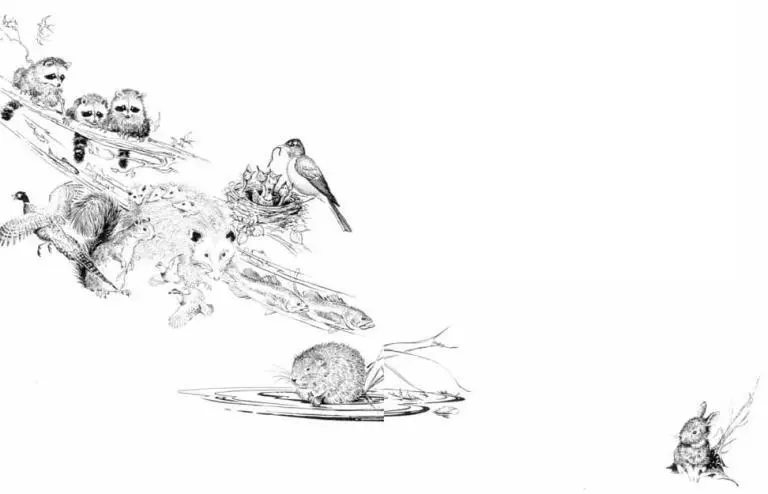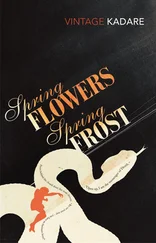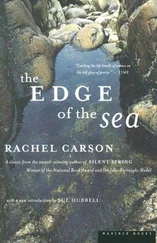A ten-year survey completed in 1959 showed that control of the Klamath weed had been “more effective than hoped for even by enthusiasts,” with the weed reduced to a mere 1 per cent of its former abundance. This token infestation is harmless and is actually needed in order to maintain a population of beetles as protection against a future increase in the weed.
Another extraordinarily successful and economical example of weed control may be found in Australia. With the colonists’ usual taste for carrying plants or animals into a new country, a Captain Arthur Phillip had brought various species of cactus into Australia about 1787, intending to use them in culturing cochineal insects for dye. Some of the cacti or prickly pears escaped from his gardens and by 1925 about 20 species could be found growing wild. Having no natural controls in this new territory, they spread prodigiously, eventually occupying about 60 million acres. At least half of this land was so densely covered as to be useless.
In 1920 Australian entomologists were sent to North and South America to study insect enemies of the prickly pears in their native habitat. After trials of several species, 3 billion eggs of an Argentine moth were released in Australia in 1930. Seven years later the last dense growth of the prickly pear had been destroyed and the once uninhabitable areas reopened to settlement and grazing. The whole operation had cost less than a penny per acre. In contrast, the unsatisfactory attempts at chemical control in earlier years had cost about £10 per acre.
Both of these examples suggest that extremely effective control of many kinds of unwanted vegetation might be achieved by paying more attention to the role of plant-eating insects. The science of range management has largely ignored this possibility, although these insects are perhaps the most selective of all grazers and their highly restricted diets could easily be turned to man’s advantage.

AS MAN PROCEEDS toward his announced goal of the conquest of nature, he has written a depressing record of destruction, directed not only against the earth he inhabits but against the life that shares it with him. The history of the recent centuries has its black passages—the slaughter of the buffalo on the western plains, the massacre of the shorebirds by the market gunners, the near-extermination of the egrets for their plumage. Now, to these and others like them, we are adding a new chapter and a new kind of havoc—the direct killing of birds, mammals, fishes, and indeed practically every form of wildlife by chemical insecticides indiscriminately sprayed on the land.
Under the philosophy that now seems to guide our destinies, nothing must get in the way of the man with the spray gun. The incidental victims of his crusade against insects count as nothing; if robins, pheasants, raccoons, cats, or even livestock happen to inhabit the same bit of earth as the target insects and to be hit by the rain of insect-killing poisons no one must protest.
The citizen who wishes to make a fair judgment of the question of wildlife loss is today confronted with a dilemma. On the one hand conservationists and many wildlife biologists assert that the losses have been severe and in some cases even catastrophic. On the other hand the control agencies tend to deny flatly and categorically that such losses have occurred, or that they are of any importance if they have. Which view are we to accept?
The credibility of the witness is of first importance. The professional wildlife biologist on the scene is certainly best qualified to discover and interpret wildlife loss. The entomologist, whose specialty is insects, is not so qualified by training, and is not psychologically disposed to look for undesirable side effects of his control program. Yet it is the control men in state and federal governments—and of course the chemical manufacturers—who steadfastly deny the facts reported by the biologists and declare they see little evidence of harm to wildlife. Like the priest and the Levite in the biblical story, they choose to pass by on the other side and to see nothing. Even if we charitably explain their denials as due to the shortsightedness of the specialist and the man with an interest this does not mean we must accept them as qualified witnesses.
The best way to form our own judgment is to look at some of the major control programs and learn, from observers familiar with the ways of wildlife, and unbiased in favor of chemicals, just what has happened in the wake of a rain of poison falling from the skies into the world of wildlife.
To the bird watcher, the suburbanite who derives joy from birds in his garden, the hunter, the fisherman or the explorer of wild regions, anything that destroys the wildlife of an area for even a single year has deprived him of pleasure to which he has a legitimate right. This is a valid point of view. Even if, as has sometimes happened, some of the birds and mammals and fishes are able to re-establish themselves after a single spraying, a great and real harm has been done.
But such re-establishment is unlikely to happen. Spraying tends to be repetitive, and a single exposure from which the wildlife populations might have a chance to recover is a rarity. What usually results is a poisoned environment, a lethal trap in which not only the resident populations succumb but those who come in as migrants as well. The larger the area sprayed the more serious the harm, because no oases of safety remain. Now, in a decade marked by insect-control programs in which many thousands or even millions of acres are sprayed as a unit, a decade in which private and community spraying has also surged steadily upward, a record of destruction and death of American wildlife has accumulated. Let us look at some of these programs and see what has happened.
During the fall of 1959 some 27,000 acres in southeastern Michigan, including numerous suburbs of Detroit, were heavily dusted from the air with pellets of aldrin, one of the most dangerous of all the chlorinated hydrocarbons. The program was conducted by the Michigan Department of Agriculture with the cooperation of the United States Department of Agriculture; its announced purpose was control of the Japanese beetle.
Little need was shown for this drastic and dangerous action. On the contrary, Walter P. Nickell, one of the best-known and best-informed naturalists in the state, who spends much of his time in the field with long periods in southern Michigan every summer, declared: “For more than thirty years, to my direct knowledge, the Japanese beetle has been present in the city of Detroit in small numbers. The numbers have not shown any appreciable increase in all this lapse of years. I have yet to see a single Japanese beetle [in 1959] other than the few caught in Government catch traps in Detroit … Everything is being kept so secret that I have not yet been able to obtain any information whatsoever to the effect that they have increased in numbers.”
An official release by the state agency merely declared that the beetle had “put in its appearance” in the areas designated for the aerial attack upon it. Despite the lack of justification the program was launched, with the state providing the manpower and supervising the operation, the federal government providing equipment and additional men, and the communities paying for the insecticide.
The Japanese beetle, an insect accidentally imported into the United States, was discovered in New Jersey in 1916, when a few shiny beetles of a metallic green color were seen in a nursery near Riverton. The beetles, at first unrecognized, were finally identified as a common inhabitant of the main islands of Japan. Apparently they had entered the United States on nursery stock imported before restrictions were established in 1912.
Читать дальше













